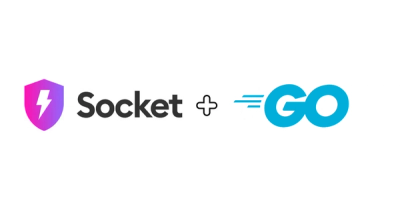
Product
Go Support Is Now Generally Available
Socket's Go support is now generally available, bringing automatic scanning and deep code analysis to all users with Go projects.
@deck.gl/core
Advanced tools
@deck.gl/core is a framework-agnostic WebGL-powered library for visualizing large-scale data sets. It provides a set of highly performant, customizable layers and tools for building complex data visualizations.
Layer Management
This code demonstrates how to create a Deck instance and add a GeoJsonLayer to visualize geographical data. The layer management feature allows you to add, remove, and update layers dynamically.
const { Deck, GeoJsonLayer } = require('@deck.gl/core');
const deck = new Deck({
initialViewState: {
longitude: -122.45,
latitude: 37.8,
zoom: 12
},
controller: true,
layers: [
new GeoJsonLayer({
id: 'geojson-layer',
data: 'https://raw.githubusercontent.com/visgl/deck.gl-data/master/website/bart-stations.json',
filled: true,
pointRadiusMinPixels: 5,
getPointRadius: 100,
getFillColor: [255, 0, 0, 200]
})
]
});Custom Layer Creation
This code shows how to create a custom layer by extending the base Layer class. Custom layers allow you to define your own rendering logic and integrate it with the Deck.gl framework.
const { Layer } = require('@deck.gl/core');
class CustomLayer extends Layer {
initializeState() {
const { gl } = this.context;
// Initialize WebGL state
}
draw({ uniforms }) {
const { gl } = this.context;
// Draw using WebGL
}
}
const customLayer = new CustomLayer({
id: 'custom-layer',
data: []
});
deck.setProps({
layers: [customLayer]
});Interactivity
This code demonstrates how to add interactivity to layers, such as hover and click events. The ScatterplotLayer is made pickable, and event handlers are provided to log information when the user interacts with the layer.
const { Deck, ScatterplotLayer } = require('@deck.gl/core');
const deck = new Deck({
initialViewState: {
longitude: -122.45,
latitude: 37.8,
zoom: 12
},
controller: true,
layers: [
new ScatterplotLayer({
id: 'scatterplot-layer',
data: [{ position: [-122.45, 37.8], size: 100 }],
getPosition: d => d.position,
getRadius: d => d.size,
getColor: [255, 0, 0],
pickable: true,
onHover: info => console.log('Hovered:', info),
onClick: info => console.log('Clicked:', info)
})
]
});Three.js is a popular JavaScript library for creating 3D graphics in the browser. It provides a wide range of features for rendering 3D scenes, including support for WebGL, shaders, and various geometries. Compared to @deck.gl/core, Three.js is more general-purpose and lower-level, requiring more manual setup for data visualization tasks.
Leaflet is an open-source JavaScript library for mobile-friendly interactive maps. It is lightweight and easy to use, with a focus on simplicity and performance. While Leaflet is excellent for creating interactive maps, it does not offer the same level of performance and customization for large-scale data visualizations as @deck.gl/core.
D3.js (Data-Driven Documents) is a powerful JavaScript library for creating dynamic and interactive data visualizations in the web browser. It provides a wide range of tools for manipulating documents based on data. D3.js is highly flexible and can be used to create custom visualizations, but it requires more effort to achieve the same level of performance and interactivity as @deck.gl/core.
FAQs
deck.gl core library
The npm package @deck.gl/core receives a total of 199,347 weekly downloads. As such, @deck.gl/core popularity was classified as popular.
We found that @deck.gl/core demonstrated a healthy version release cadence and project activity because the last version was released less than a year ago. It has 5 open source maintainers collaborating on the project.
Did you know?

Socket for GitHub automatically highlights issues in each pull request and monitors the health of all your open source dependencies. Discover the contents of your packages and block harmful activity before you install or update your dependencies.

Product
Socket's Go support is now generally available, bringing automatic scanning and deep code analysis to all users with Go projects.

Security News
vlt adds real-time security selectors powered by Socket, enabling developers to query and analyze package risks directly in their dependency graph.

Security News
CISA extended MITRE’s CVE contract by 11 months, avoiding a shutdown but leaving long-term governance and coordination issues unresolved.